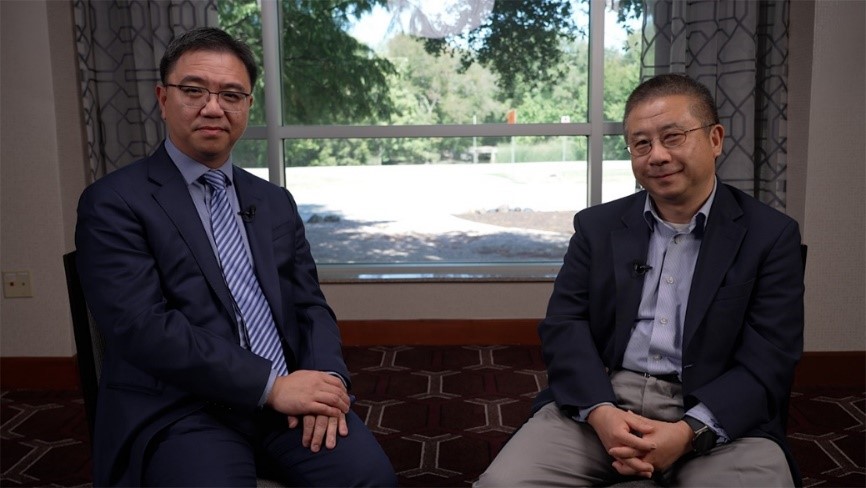
Battery management technologies that help strengthen the grid
With the increasing popularity of electric vehicles (EVs) and the transition to more renewable energy sources, our reliance on fossil fuels for more than a century is decreasing. More and more power companies are turning to solar panels and wind turbines (rather than natural gas turbines) to generate electricity to charge electric vehicles and power our homes and businesses. These trends bring us one step closer to a sustainable energy future.

These trends also pose big challenges for the power grid. There are different demands at different times of the day, and the amount of solar and wind power available also varies with the weather. Therefore, batteries become an important part of the grid.
"The battery can fill in the gap on cloudy days and when the wind dies down." Richard Zhang, a professor at Virginia Tech who teaches courses in power electronics technology at the university and has worked in the grid and energy industry for 25 years, said, "The battery can be charged during off-peak hours and supplied during peak hours, such as charging electric vehicles, so it improves the economics of electricity.
Getting batteries to store and release large amounts of electricity from the grid safely, reliably, and cost-effectively is a complex challenge. Texas Instruments' expertise in providing advanced battery management semiconductor solutions can be leveraged.
"The batteries used in the grid are larger and have higher voltages, so better thermal management and more sophisticated monitoring are needed." "Effectively managing these batteries requires understanding battery chemistry and using high-performance semiconductor devices to safely and fully utilize each battery," said Samuel Wong, vice president and general manager of Texas Instruments' battery Management Solutions business unit.
Solve the grid problem
Richard said the adoption of solar and wind power, as well as electric vehicles, is good news for the planet. The problem is that the grid was not designed with these new types of demand on available energy in mind.
"It's much easier to get people to choose an electric car today than it was a few years ago." "The bigger and bigger issue now is getting the power infrastructure to handle electric vehicles and other energy needs," he said.
The challenge, according to Samuel, is the instability of the grid, in other words, the fluctuations in electricity generation and consumption. Solar and wind power can cause changes in energy supply, especially at night, when solar power is completely impossible. The charging habits of EV owners can also lead to fluctuations in supply and demand.
"If everyone went home at night and charged their electric vehicle overnight, the grid might not be able to handle it." He said.

Figure 1: Samuel Wong (left), vice president of Texas Instruments' Battery Management Solutions business unit, discusses the impact of battery energy storage systems with Richard Zhang of Virginia Tech.
Samuel and Richard, like most power experts, agree on the solution to grid instability: energy storage systems (ESS). Energy storage systems, usually in the form of batteries, can capture and store excess electricity in the grid during hours of high supply and demand, and then provide electricity at other times. You might think of the relatively small, lightweight battery cells used in electric cars. But for the grid, the energy storage system is made up of larger, heavier cells stacked into the shape of a train car, and each battery pack can operate at up to 4 megawatt-hours (MWh), enough to power thousands of homes.
Placing energy storage systems in different locations on the grid can optimize its distribution capacity, that is, distributing large amounts of power to various communities anytime, anywhere. This could mean placing an energy storage system next to a solar panel farm that can absorb excess electricity during the day and then pump it back to the grid at night. Or placing the ESS within a community could make it easier to draw electricity from local rooftop solar panels and then provide additional power to charge nearby electric vehicles when needed. "The energy storage system can act as a local energy reservoir for the community." "Samuel said.
Manage battery and system performance
The core of the energy storage system is a high-voltage battery module, usually a lithium iron phosphate battery. If the charge or discharge is too fast, a lot of heat will be generated. If completely exhausted too often, the lifetime of these modules will also be shortened.
Samuel said that monitoring the temperature and charge of these batteries requires extremely sophisticated semiconductors, such as the BQ79616 industrial battery monitor. This is because even small fluctuations in temperature and voltage can signal a need to pay attention to battery conditions.
"You have to get to millivolt accuracy to know how much power is left in the battery," he said.
Texas Instruments' extensive experience with ultra-precision battery monitors has proven critical to helping the energy storage industry produce systems that provide important battery management data to the grid. Samuel points out that these results can have a significant impact on the cost-effectiveness of grid energy storage systems.
"If you can only measure the amount of energy in a 10MWh storage system with 5% accuracy, you can't safely use more than 9.5MWh." "The TI battery monitor can improve the measurement accuracy to 1%, so you can use 9.9MWh of power," he said.
In addition to accurate battery monitoring, grid-scale energy storage systems, such as those integrated with solar panel farms, require efficient high-voltage power conversion technologies that can help reduce power losses in grid transmission and distribution. These systems also rely on sensing and isolation technologies to help maintain the safety and stability of the system, which is critical for managing power flows up to 1500V.
The impact on the future
For the foreseeable future, innovations in battery storage systems will play a key role in transforming and protecting the grid amid changes brought about by solar and wind power, as well as charging electric vehicles.
"Strengthening the grid through innovation in energy storage is really exciting." "Samuel said. "Texas Instruments has achieved great results today and will continue to do so with the smart grid of the future."
Disclaimer: This article is a reprint article, reprint this article to convey more information, copyright belongs to the original author. If the video, pictures and text used in this article involve copyright issues, please contact the website for processing.
